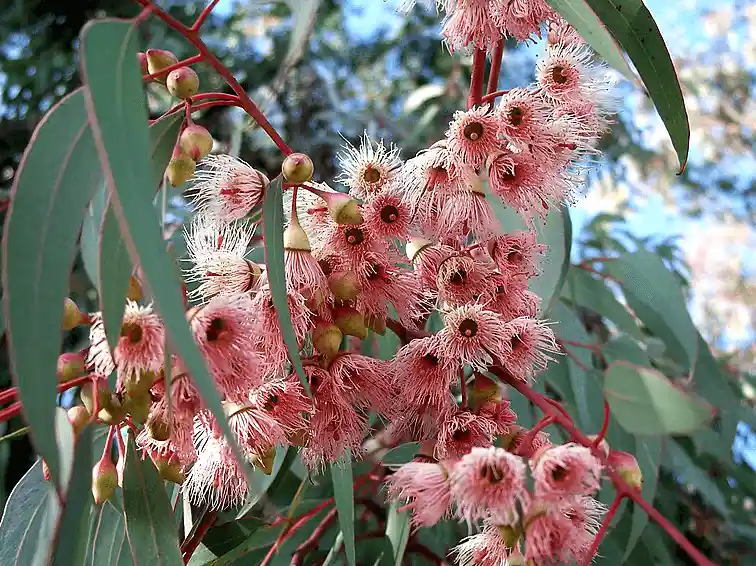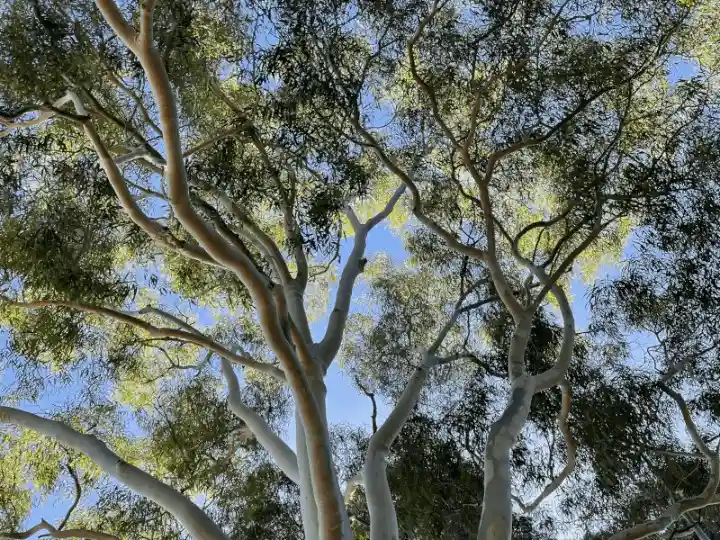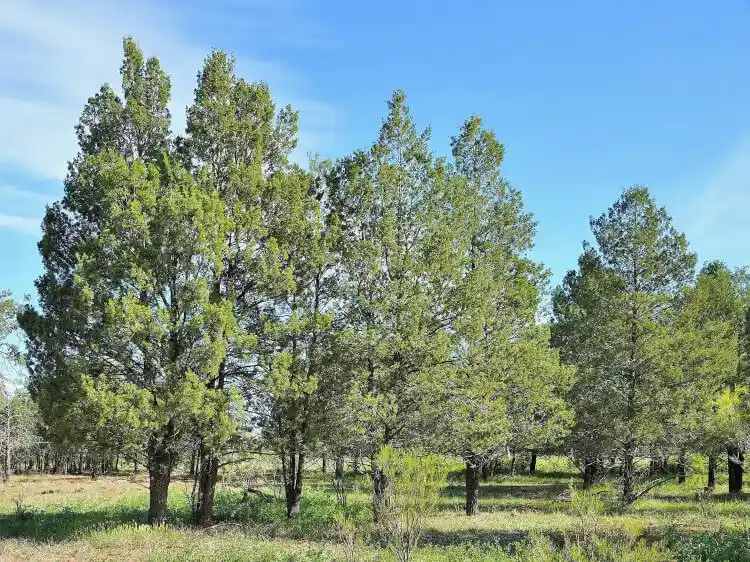
| Botanic name | Callitris glaucophylla |
| Other names | White Cypress Pine |
| Main Origin | Southern half of mainland Australia |
| Mature size | 2 – 4 m x 10 – 20 m (w x h) |
| Mature form | Conical or narrowly pyramidal |
| Foliage | Bluish, greyish, or dark green |
| Growth rate | Slow to moderate |
| Position | Full sun |
| Soil | Prefers sandy soil, but adapts to other soils |
| Water | Minimal, occasional deep watering |
| Climate | Arid, semi-arid, Mediterranean, temperate, subtropical |
| Flower | Male/female cones in late summer |
| Use | Specimen tree, windbreak, screening |
| Notes | Suitable for coastal sites |
IN THIS ARTICLE
Overview
When it comes to trees that embody the resilience and beauty of Australia’s natural environment, Callitris glaucophylla, commonly known as the White Cypress Pine, stands out.
White Cypress Pine has long played an ecological and cultural role in the Australian landscape, valued for its durable timber, habitat value, and resilient growth in dry climates. Its common name suggests the light-coloured timber of the species.
This hardy, evergreen conifer is one of the most iconic native species, admired for its elegant form, aromatic foliage, and exceptional adaptability, making it invaluable to sustainable gardening and landscaping.
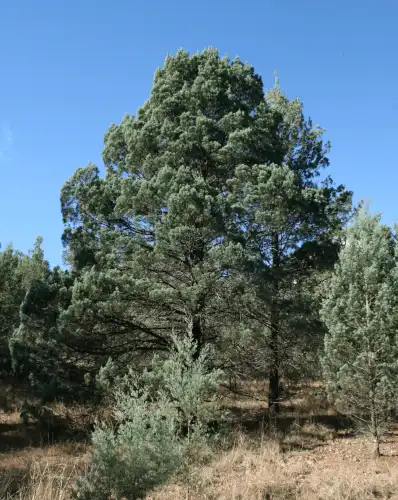
Origin and distribution
White Cypress Pine (Callitris glaucophylla) is a native Australian conifer with a wide natural distribution across the inland regions of the southern half of Australia. It is the most broadly occurring species among Callitris pines.
The species is especially common in arid, semi-arid and sub-tropical zones, often forming pure or mixed stands in open woodlands, shrublands, and dry forests.
Its widespread distribution reflects its resilience and versatility across various growing conditions on the continent.
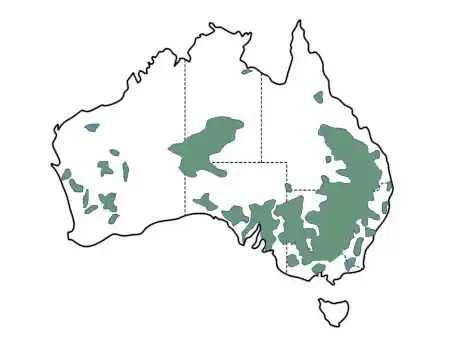
Growth and care
White Cypress Pine thrives in a range of dry, inland climates. It is well adapted to areas with hot summers and cool to mild winters. These climates often experience irregular, low to moderate rainfall and extended dry periods. The plant has evolved to be highly drought-tolerant.
The species grows on well-drained sandy, rocky, or loamy soils that are low in nutrients. It is highly tolerant of other soils, but they must be well-drained.
If planting in heavy clay, consider improving drainage by incorporating organic matter, coarse grit, or gypsum. White Cypress Pine cannot tolerate persistent wet or waterlogged conditions.
Callitris glaucophylla prefers mildly acidic to neutral soils, but can adapt to alkaline soils. It exhibits some tolerance to salt exposure (saline soil and salt spray), making it suitable for seaside planting.
The plant is also frost-tolerant and can withstand occasional low temperatures to -7°C. However, it doesn’t perform in prolonged freezing alpine conditions.
White Cypress Pine has low fertilisation needs, as it naturally thrives in inland Australia’s nutrient-poor soils. However, during establishment or in particularly depleted soils, a light application of a balanced, slow-release fertiliser can support early growth.
Organic matter, such as compost or well-rotted mulch, can be beneficial for retaining moisture and improving soil health and structure.
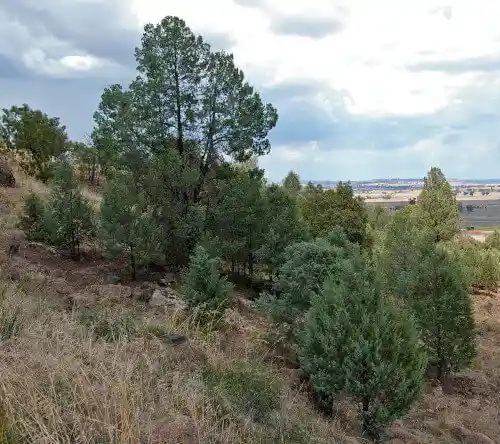
Features
White Cypress Pine typically develops an upright and symmetrical form with a conical shape. In optimal conditions, they can reach heights of up to 20 metres. However, it is often much shorter in cultivation due to a more controlled environment.
Callitris glaucophylla has fine, aromatic, scale-like foliage, which varies in colour from soft blue-green to silvery grey. This unique colouration creates a visually soothing effect in the landscape, contrasting beautifully with brighter greens or complementing other muted tones.
The overall form of the species makes it an eye-catching feature in ornamental gardens. It works well as a standalone specimen tree, a focal point in group plantings, or a structural element in formal designs.
The plant is renowned for thriving in poor, sandy soils and extreme drought. Its deep-rooted system enables it to access water reserves far below the surface, allowing it to survive long periods without rainfall.
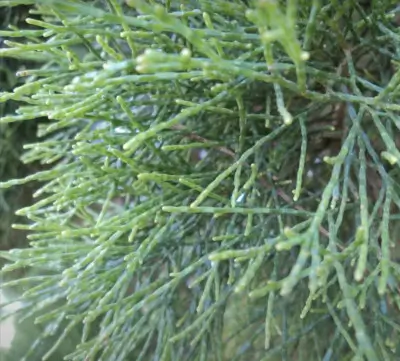
Given the increasing importance of fire-resilient landscaping, White Cypress Pine is valued for its relatively low flammability, compared to native Eucalypts. Its role in creating safer gardens without compromising its aesthetics or environmental benefits is particularly significant in fire-prone regions.
It is an excellent option for those seeking a tall natural screen or privacy barrier. Its dense foliage creates an effective visual interest and sound buffer, particularly when planted as a hedge or in staggered rows.
The dense, evergreen foliage of the White Cypress Pine is highly effective at providing wind protection, particularly in open or rural areas. Planted in rows, these trees create shelterbelts that protect crops, gardens, and homes from harsh winds while reducing soil erosion.
The foliage of White Cypress Pine provides shelter for wildlife like birds, insects, and small mammals, while its cones can be a food source. Incorporating this tree into your garden can help support biodiversity, encouraging a thriving ecosystem.
The species’ heartwood is known for its resistance to termites, a rare and valuable trait that contributes to its popularity in the timber industry.
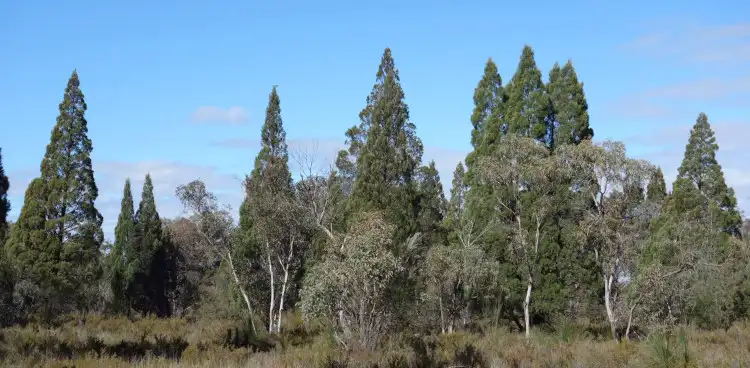
Final words
The White Cypress Pine holds cultural value for Indigenous Australians, who have long utilised its wood for tools, implements, and ceremonial purposes.
Its enduring presence across the Australian landscape also makes it a symbol of resilience and adaptability. This notion should resonate with gardeners and designers aiming to reflect the spirit of the land in their outdoor spaces.
From its striking aesthetic appeal to its invaluable contributions to biodiversity and sustainable gardening, this versatile cypress pine is a standout choice for large gardens and landscapes.
Whether you’re designing a drought-tolerant backyard, a privacy screen, or an ecosystem-supporting haven, White Cypress Pine can meet your needs while honouring Australia’s unique natural heritage.
Callitris glaucophylla is much more than a tree; it’s a testament to the beauty and resilience of Australia’s native flora.
FAQs
What is the growth rate of White Cypress Pine?
The growth rate of White Cypress Pine is considered slow to medium, depending on its growing environment. It typically grows 20 – 50 cm a year in optimal conditions.
What is Callitris glaucophylla distribution?
Callitris glaucophylla spreads across arid and semi-arid zones of Australia. It is often found in hot and dry areas with minimal or moderate rainfall.
Is white cypress native to Australia?
Yes. The White Cypress Pine is native to Australia. Its botanical name is Callitris glaucophylla, one of many native cypress pine species.
How tall do white cypress trees grow?
The White Cypress Pine can grow up to 20 – 25 metres in optimal conditions. However, it rarely reaches this height in cultivation due to the more controlled growth environment.
